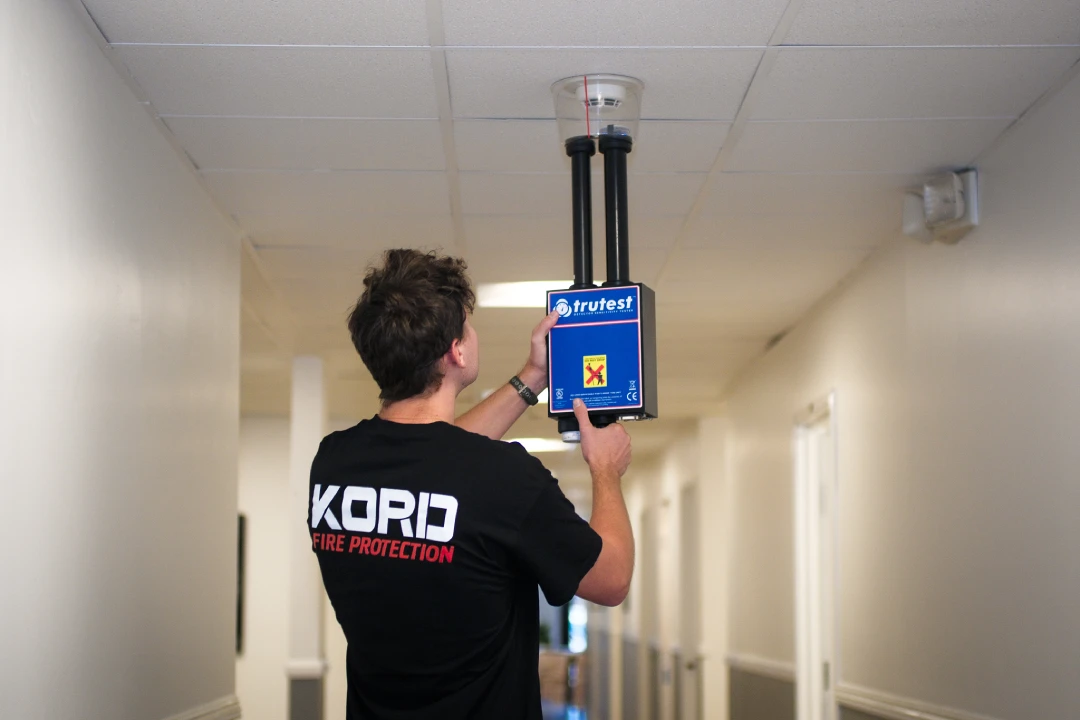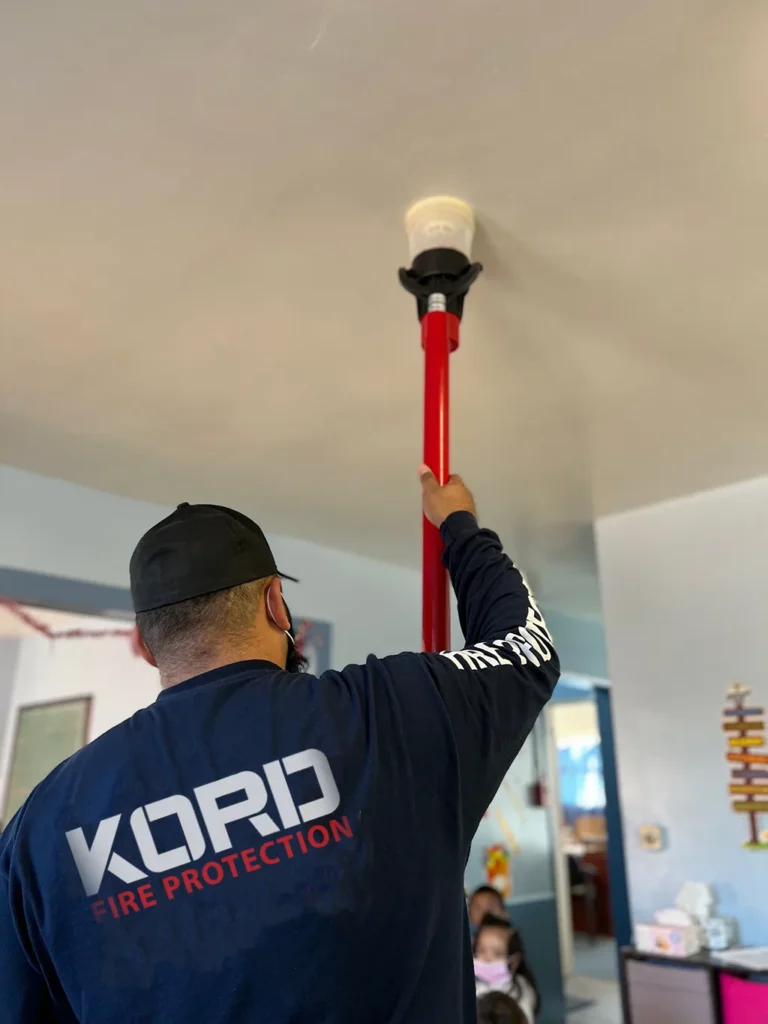

Smoke
Sensitivity Test
What’s A Smoke sensitivity test?
Smoke detector activates according to the sensitivity of the unit to the detection of smoke and our heat in a given room. What the smoke sensitivity test does is measure the threshold of an activation of each unit in your commercial facility. If the smoke detector is too sensitive alarms can’t go off in inappropriate times and cause damage. NFPA are the standards that Kord Fire Protection follows when conducting annual sensitivity test on all smoke and heat sensors within facilities. The method in with the test is conducted on each unit is the introduction of a calibrated amount of smoke into the smoke detector unit. Your technician will start with a minimum amount of smoke then increase the amount introduced to the unit in order to ascertain when the unit triggers the alarm.


Concerned about smoke sensitivity? Schedule a quick call with us today
Smoke sensitivity Test can help prevent serious health issues such as respiratory problems, allergies, and aggravated asthma. Prolonged exposure can also increase the risk of chronic conditions like bronchitis or heart disease. Early detection is key to preventing long-term damage – take action today!
When is a Smoke Sensitivity Test Required?
Sensitivity tests were usually required on an annual basis for most facilities especially healthcare facilities and manufacturing facilities. Healthcare facilities are regulated by the AHCA (Agency for healthcare administration) and should be inspected according to their instructions.
There is no need to call other fire protection companies. We can take car of all your needs from a wet fire sprinkler system, fire alarm, or a complex clean agent or pre action system, our highly skilled fire protection contractors will test all of your fire protection systems without unexpected nuisance alarms or equipment shutdowns.


How does a smoke sensitivity test affect fire safety?
Smoke detector sensitivity plays a critical role in fire safety because it directly impacts the device’s ability to detect smoke early, when a fire is still in its initial stages. If a smoke detector is too sensitive, it may trigger false alarms, leading to unnecessary evacuations and potential disruptions. On the other hand, if the detector is not sensitive enough, it might fail to activate in time to alert people to a developing fire, reducing the window for safe evacuation and increasing the risk of injury or death.
Proper sensitivity ensures smoke detectors detect the right amount of smoke, providing early fire warnings while minimizing false alarms. This balance is crucial for giving people enough time to evacuate and take action before a fire spreads. Regular sensitivity testing helps maintain this balance, ensuring detectors remain effective for fire safety.
Smoke Sensitivity FAQs
Why is smoke detector sensitivity testing important?
It ensures that smoke detectors respond appropriately to smoke, reducing false alarms and ensuring safety during a fire.
How is smoke detector sensitivity tested?
Sensitivity is typically tested using a calibrated smoke or aerosol device that simulates smoke to check detector response.
Can I test smoke detector sensitivity myself?
While some detectors allow for self-testing, professional testing is recommended to ensure accuracy and compliance with safety standards.
What happens if a smoke detector is too sensitive?
A overly sensitive smoke detector can trigger false alarms, which may cause unnecessary evacuations or disruptions.
Get Top-Rated Fire Safety Solutions!
Kord Fire Protection is your go-to when it comes to all things fire protection. For over 20 years, we’ve been serving Southern California with the quality service and equipment to keep your home or business safe at all times. Our competitive prices reflect our unwavering commitment to protecting what matters most in the event of a fire emergency. Give us a call, send an email, or use that form!

